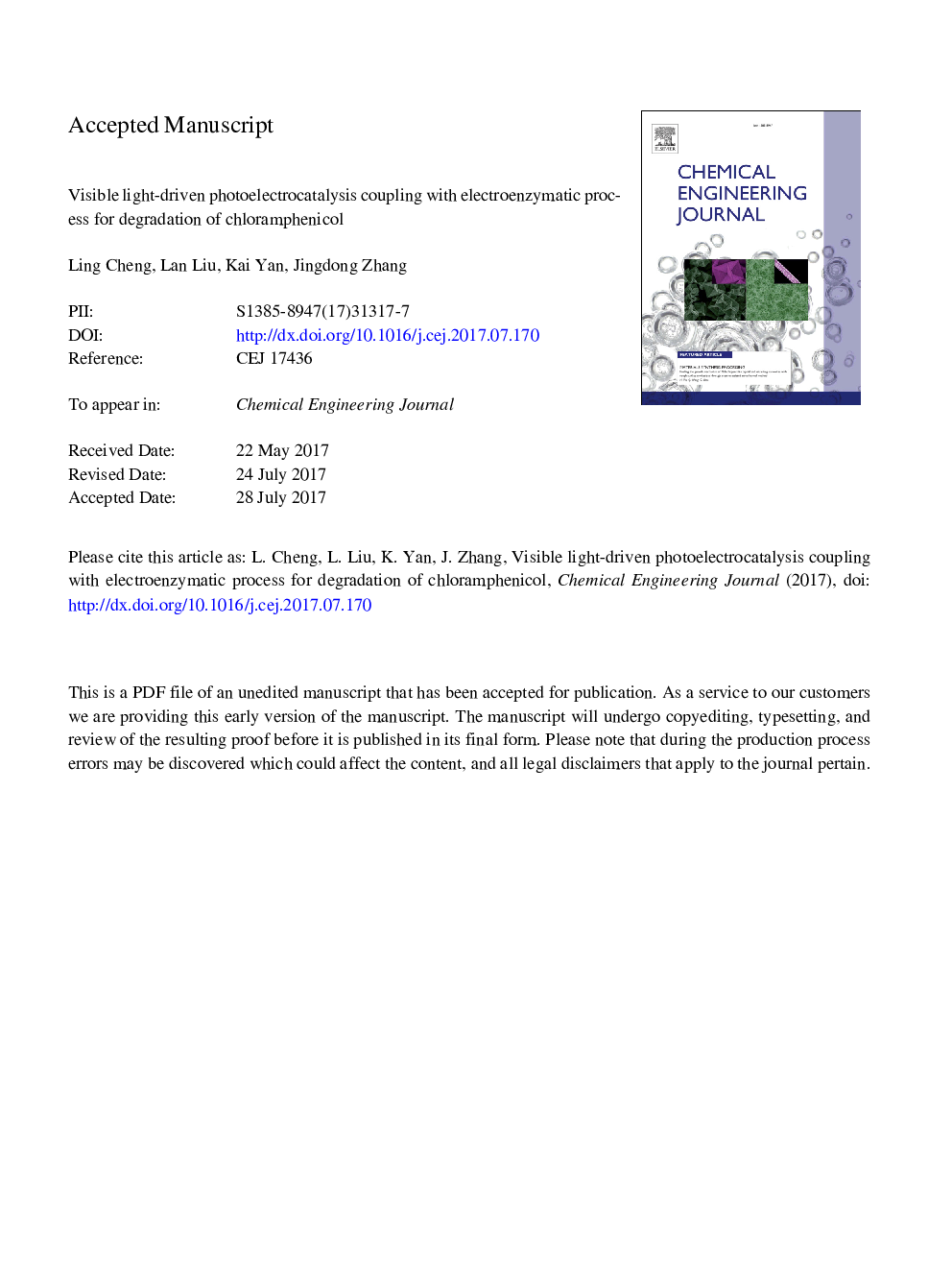| Article ID | Journal | Published Year | Pages | File Type |
|---|---|---|---|---|
| 6581160 | Chemical Engineering Journal | 2017 | 38 Pages |
Abstract
Photoelectrocatalysis (PEC) and electroenzymatic (EEC) process are two important techniques for degradation of refractory organic compounds. In this work, we coupled PEC and EEC (PEC-EEC) to develop a novel system for efficient removal of chloramphenicol (CAP) driven by visible light. This coupling system was constructed by a CdS/WO3/FTO photoanode and a hemin-graphene immobilized cathode. The photoanode was fabricated by layer-by-layer assembly of CdS quantum dots on WO3/FTO to provide high visible light activity. In order to achieve the EEC process, graphite cathode was modified with hemin-graphene composite, in which hemin served as the mimic enzyme. When CdS/WO3/FTO anode was irradiated under visible light, photogenerated holes participated in the formation of hydroxyl radicals while photogenerated electrons were driven by bias potential to the cathode for the reduction of oxygen into hydrogen peroxide. Thus, organic pollutant could be degraded by the oxidation reactions either with the hydroxyl radicals or the hydrogen peroxide under the catalysis of hemin. The visible light-driven PEC-EEC system was applied to the removal of CAP. The intermediates formed during the degradation process were separated by high-performance liquid chromatography and identified by liquid chromatography-mass spectrometry, and a degradation pathway for CAP in such a PEC-EEC system was proposed.
Keywords
Related Topics
Physical Sciences and Engineering
Chemical Engineering
Chemical Engineering (General)
Authors
Ling Cheng, Lan Liu, Kai Yan, Jingdong Zhang,
